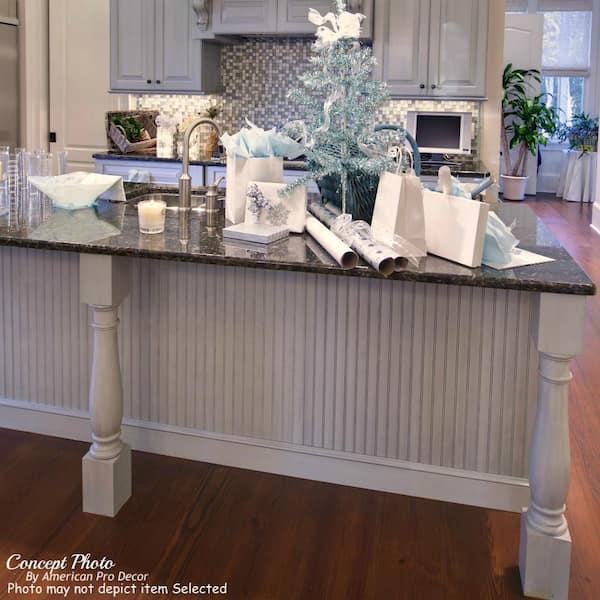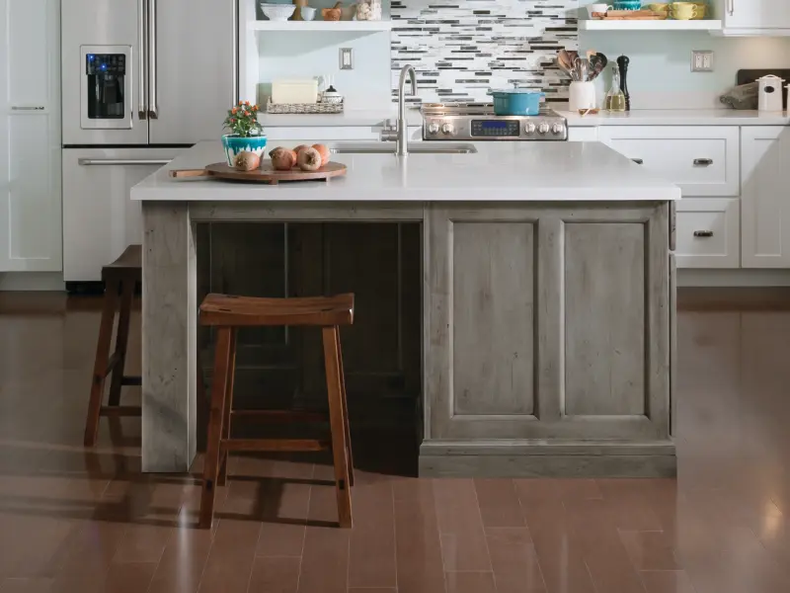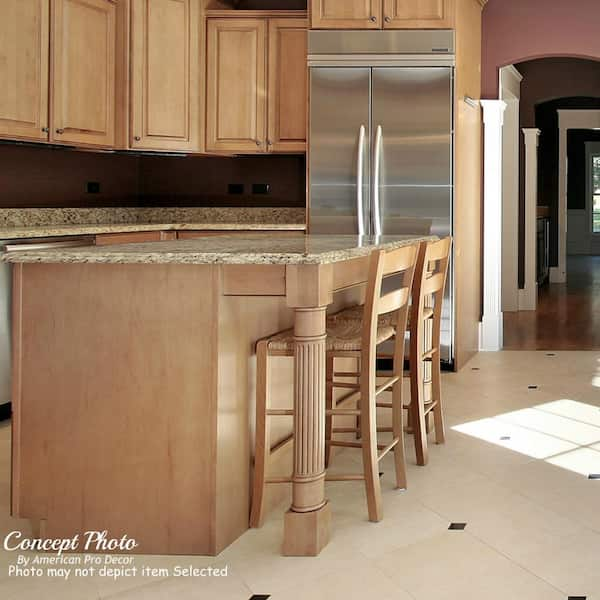Trendy Kitchen Island Legs: Boost Your Kitchen Style
Trendy Kitchen Island Legs: Boost Your Kitchen Style
Blog Article
Crucial Tips for Selecting the Perfect Eating Table for Your Cooking Area
Choosing the perfect table for your cooking area is more than just a matter of taste; it demands a detailed understanding of your space and needs. Begin by measuring your readily available space to ensure sufficient clearance for activity. The form of the table plays a crucial role; while rectangle-shaped tables fit larger areas, rounded ones foster intimacy, and extendable choices use versatility. Product option is just as important, with woods supplying toughness and glass financing a modern-day touch. The table needs to harmonize with your kitchen area's aesthetic appeals and fit your household easily. What other elements might affect this vital choice?
Step Your Space
Choosing the optimal eating table starts with a thorough assessment of your readily available area. This foundational step makes certain that the table not only fits pleasantly within the space however additionally complements the total format and functionality of your dining area. Begin by gauging the measurements of the room, thinking about doorways, windows, and any existing furnishings. This will help you identify the optimum permitted size for your table.
It is essential to leave ample room for chairs to be pulled out and for people to move around the table without blockage. A basic rule of thumb is to permit at the very least 36 inches of clearance from the edge of the table to the nearest wall or piece of furniture.
Furthermore, consider the number of individuals you generally amuse and whether you need additional area for guests. Going with an extendable table can provide adaptability, enabling you to fit varying varieties of diners. By accurately determining your area, you prepared for selecting a dining table that improves both the aesthetic appeals and performance of your eating area.
Pick the Right Shape

On the various other hand, round tables are superb for smaller sized kitchen areas or intimate events, as they promote conversation by permitting everybody to deal with each other. They likewise provide a sense of comfort and can fit well in tighter spaces due to their absence of sharp corners. Oblong tables supply the most effective of both worlds, incorporating the size of rectangular tables with the affection of round ones, making them functional for various settings.
Square tables are one more option, specifically matched for square-shaped areas. They develop a modern and balanced look, cultivating an equal dining experience for all seated.
Material Considerations
When picking a dining table, material considerations are vital in identifying the table's durability, maintenance needs, and total visual. Timber is a traditional option, providing ageless appeal and toughness. Hardwoods like walnut, mahogany, and oak are specifically durable, though they can be pricey. kitchen island legs. Softwoods, such as want, are more budget friendly however may be prone to damages and scratches.
Glass-topped tables supply a modern-day, sleek appearance and can make a space appear bigger due to their openness. Nonetheless, they call for constant cleaning to stop smudges and fingerprints. Furthermore, tempered glass is suggested for its extra stamina and safety.

Lastly, composite products like MDF (Medium-Density Fiberboard) or plywood are budget-friendly alternatives. These products can simulate the appearance of strong timber however may not provide the exact same long life. They are normally less complicated to tidy however can be susceptible to water damages otherwise appropriately secured.
Inevitably, the option of product must line up with your cooking area's design, your way of life requires, and your budget restraints. (kitchen island legs)
Seating Capacity and Convenience
Exactly how do you establish the best seats capability and comfort for your eating table? For a family of 4, a rectangular table of 48 inches long or a round table with a 48-inch size is usually adequate.
Comfort is just as important. The elevation of the table must preferably be around 30 inches, offering a balanced ergonomic stance for seated diners. Chairs must have a seat height of 18 to 20 inches to make sure Related Site a comfy eating posture. Additionally, take into consideration the chair style; encouraging back-rests and upholstered seats can boost dining comfort significantly, particularly during extended meals.
Design and Visual Appeal
Selecting a table that matches your style and looks includes balancing personal preference with the existing decoration of your eating space. The table is typically the focal point of the kitchen area, and its layout should match the overall style of the space. Whether your kitchen area boasts a contemporary, minimal look or a rustic, farmhouse beauty, the table you select must integrate with these aspects to create a natural and inviting atmosphere.
Consider materials thoroughly; wood offers a timeless allure and can range from rich mahogany for a typical aim to lighter oak for a modern feeling. Metal and glass tables, on the other hand, can introduce a sleek, commercial side to your kitchen. Do not forget the table's form-- rectangle-shaped tables are flexible and traditional, while round and oblong options can foster an extra intimate dining experience.
In addition, pay attention to details and finishes. A troubled finish may include personality and heat, whereas a shiny surface can add to a clean, modern-day visual. Ultimately, your table ought to not just fit perfectly right into your cooking area's style but also reflect your personal design, boosting the space both functionally and aesthetically.
Verdict
In conclusion, picking the ideal table for a cooking area demands cautious evaluation of room, shape, product, seating ability, and aesthetic harmony. Ensuring a minimal clearance of 36 inches promotes comfortable movement, while the choice of form enhances spatial characteristics. Material choice influences sturdiness and layout, making website link it critical to align with the kitchen area's total visual. Eventually, a well-chosen eating table fosters an inviting environment and fits the home easily, hence enhancing the dining experience.

When choosing an eating table, product considerations are vital in establishing the table's durability, upkeep demands, and total aesthetic. For a family members of four, a rectangular table of 48 inches long or a round table with a 48-inch diameter is usually adequate.
Do not overlook the table's form-- rectangle-shaped tables are functional and traditional, while round and oval options can foster a much more intimate eating experience. kitchen island legs.
Report this page